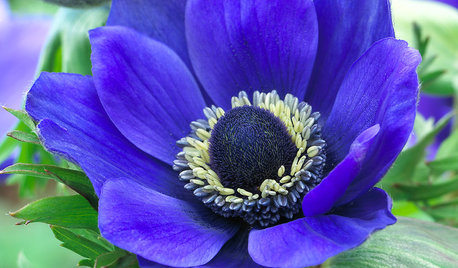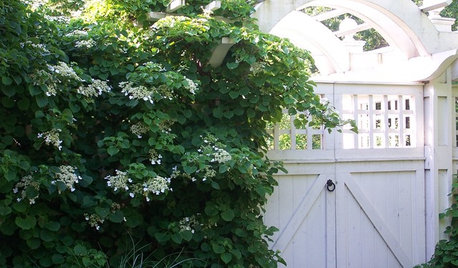Suggestions for non-astringent persimmons for New England, zone 6
mamuang_gw
11 years ago
Related Stories

FRUIT TREESHow to Grow Your Own Persimmons
Sturdy and easy to care for, these trees offer bright fruit through winter — and keeping them in bounds is no sweat
Full Story
GARDENING GUIDES6 Plants That Beat Butterfly Bush for the Wildlife Draw
It's invasive, a nonnative and a poor insect magnet. Check out these better alternatives to butterfly bush in the garden
Full Story
FALL GARDENING6 Trees You'll Fall For
Don’t put down that spade! Autumn is the perfect time for planting these trees
Full Story
FALL GARDENING6 Splendid Blue-Flowering Bulbs
How do you blue? With colors from sky to cobalt, these bulbs will greet you merrily in a spring garden
Full Story
FALL GARDENING6 Deer-Resistant Flowering Vines to Plant This Fall
Have a major deer problem? Here are some of the only vines that have a chance of not being eaten
Full Story
GARDENING GUIDESTop 12 Summer-Blooming Perennials for Deer-Resistant Drama
Can you have garden color, fragrance and exciting foliage with hungry deer afoot? These beauties say yes
Full Story
FRONT YARD IDEASBefore and After: Front Lawn to Prairie Garden
How they did it: Homeowners create a plan, stick to it and keep the neighbors (and wildlife) in mind
Full Story
KITCHEN DESIGN9 Questions to Ask When Planning a Kitchen Pantry
Avoid blunders and get the storage space and layout you need by asking these questions before you begin
Full Story
EDIBLE GARDENSHow to Grow 10 Favorite Fruit Trees at Home
Plant a mini orchard in fall, winter or early spring to enjoy fresh-off-the-tree fruit the following year
Full Story
GARDENING GUIDESGarden-Friendly Native Alternatives to Overplanted Exotics
There are lots of gorgeous, wildlife-friendly native plants ready to make an appearance in your garden
Full StoryMore Discussions






lucky_p
creekweb
Related Professionals
Pottstown Landscape Contractors · Concord Landscape Contractors · Bridgeport Landscape Contractors · Burlington Landscape Contractors · Cincinnati Landscape Contractors · Hayden Landscape Contractors · Hendersonville Landscape Contractors · Lexington Landscape Contractors · Longview Landscape Contractors · Placerville Landscape Contractors · Rancho Santa Margarita Landscape Contractors · South Portland Landscape Contractors · West Coon Rapids Landscape Contractors · Oxon Hill Landscape Contractors · Suisun City Landscape Contractorsmamuang_gwOriginal Author
Tony
bennylafleur
mamuang_gwOriginal Author
alan haigh
Tony
strudeldog_gw
Tony
alan haigh
strudeldog_gw
Tony
Tony
strudeldog_gw
mamuang_gwOriginal Author
creekweb
Scott F Smith
strudeldog_gw
creekweb
Tony
cousinfloyd
Scott F Smith
creekweb
shane11
fruitcraz
Scott F Smith
shane11
creekweb
indicente
Scott F Smith
indicente
indicente
Matt
mamuang_gwOriginal Author